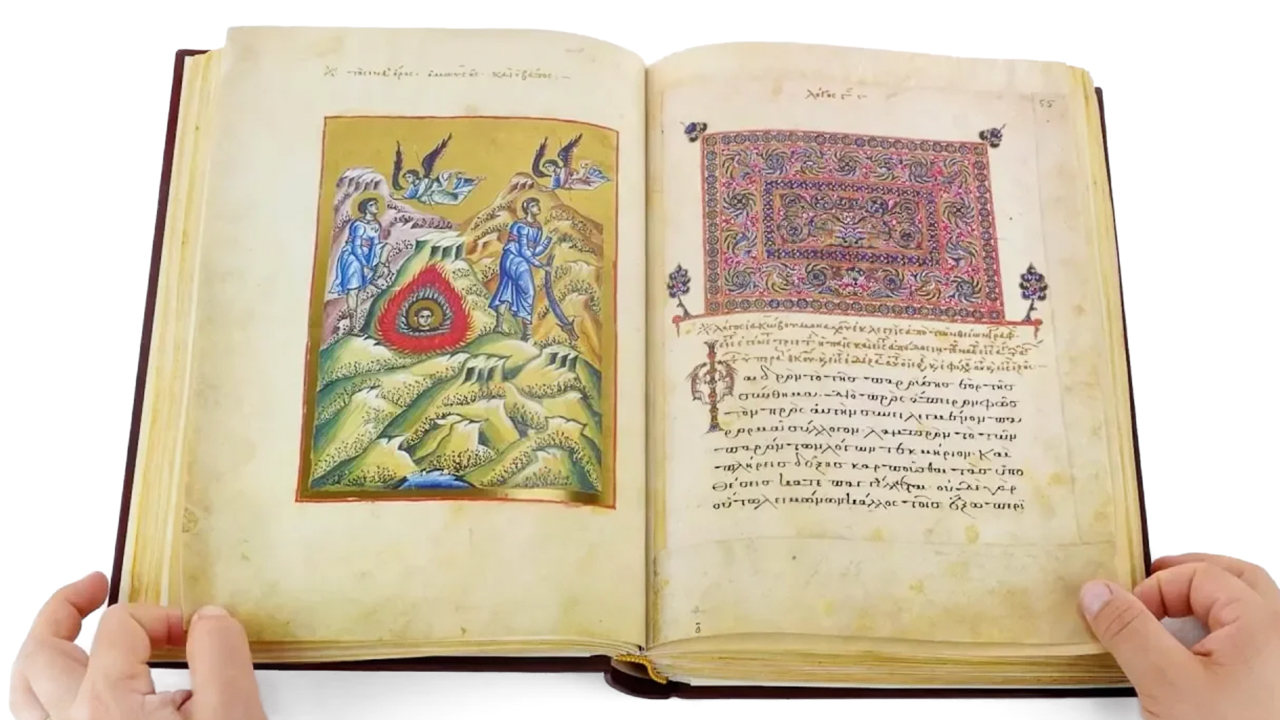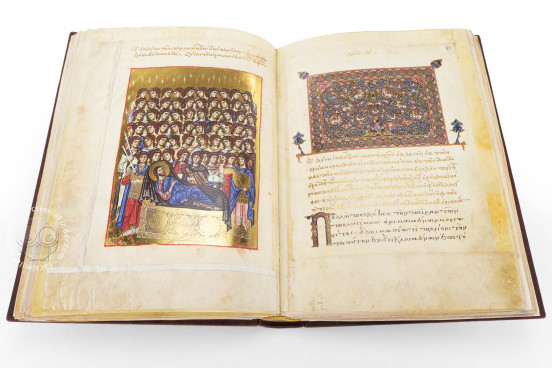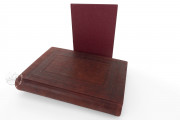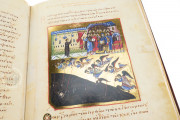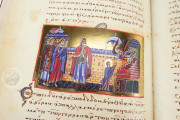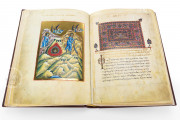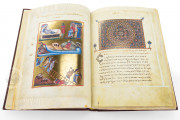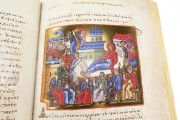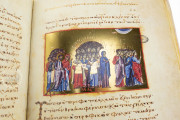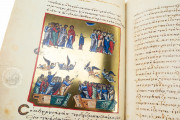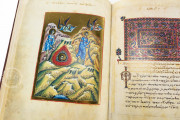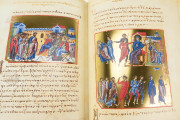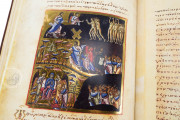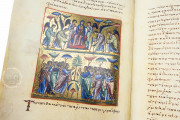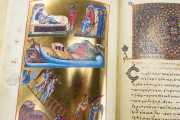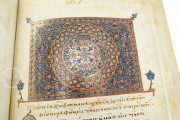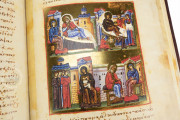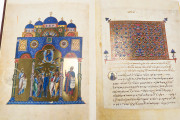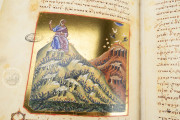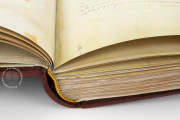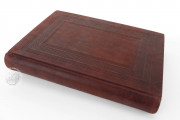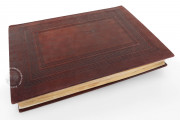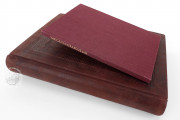The sumptuously illuminated Marian Homilies manuscript in the Vatican was created at the monastery of Kokkinobaphos in the mid-twelfth century. Its Greek-language text is a series of six sermons on the Virgin Mary composed by James of Kokkinobaphos, a monk of that monastery who had ties to members of the imperial court in Constantinople. James helped to design its seventy-six splendid miniatures by the Kokkinobaphos Master. It may have been made for the wife of Andronicus Comnenus, brother of Manuel I, Emperor of the East.
The manuscript's sermons are linked to six events in the life of the Virgin Mary: her conception, birth, presentation in the Temple, and betrothal; the archangel Gabriel's announcement that she is to be the mother of the Son of God; and her visit to her cousin Elizabeth.
An Artist with Ties to the Imperial Family
The Kokkinobaphos Master is named for this manuscript and a closely related deluxe manuscript of the same text illuminated by him (Paris, Bibliothèque nationale de France, MS gr. 1208). It is unclear which was produced first. The Vatican manuscript is both larger and has a more ambitious cycle of images. The Kokkinobaphos Master enjoyed the patronage of the imperial family, and aspiring artists copied his distinctive style.
The Early Life of the Virgin and More
The pictorial program closely follows the text of the sermons. It not only presents the most extensive cycle of images depicting the life of the Virgin in Byzantine art, but it also treats Old Testament and Eschatological themes discussed in the sermons.
Harmony in Gold
All of the miniatures employ gold as a background. The paintings, six of which are full-page miniatures and many others of which are three-quarter-page in format, often incorporate multiple scenes. One miniature, for example, shows the four rivers of Paradise, the Lord instructing Adam and Eve not to eat the fruit, the Temptation (in two scenes), and the Expulsion in a single miniature (fol. 35r). Despite their theological and narrative complexity, the miniatures are aesthetically pleasing and harmonious.
Thread as Symbol
The book includes portrayals of the Virgin as a young woman holding a spindle (fols. 115v, 118r, 122r, 124r, 126r, 127v, and 130v). This artistic conceit is taken from one of the author's sources, the Protoevangelium of James, in which the Virgin is given purple fibers to weave into a thread for the Holy of Holies. This thread then became a symbol of the Incarnation.
Charming Animals
The text was written by a single scribe in Greek Minuscule in long lines (one column), with headings in gold. The historiated initial that opens the first sermon depicts the Virgin and Child (fol. 3r). Three of the decorated initials at the head of the other sermons feature animals, often in pairs, including birds and quadrupeds (fols. 55r, 111r, and 134v).
At the Vatican since the Fifteenth Century
The manuscript is listed in a 1475 inventory of Vatican manuscripts. In 1894, a thief posing as a researcher cut out forty leaves, most bearing miniatures, with the intention of reselling them. Most of the leaves were recovered quickly, but a few were lost, presumably destroyed by the thief. The manuscript is currently bound in three volumes.
We have 1 facsimile edition of the manuscript "Marian Homilies": Marien-Homilien facsimile edition, published by Belser Verlag, 1991
Request Info / Price
